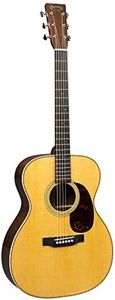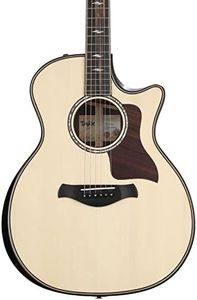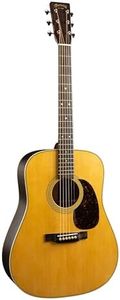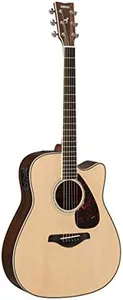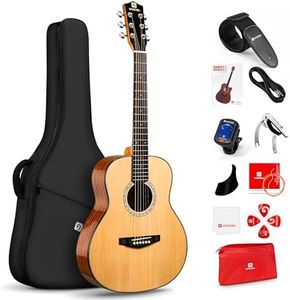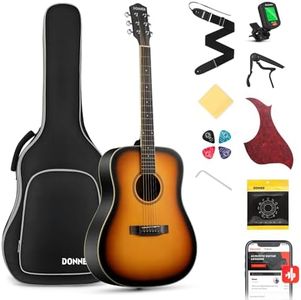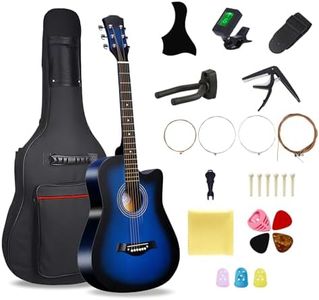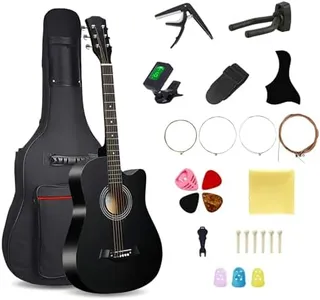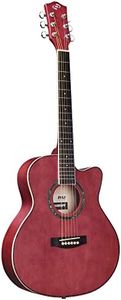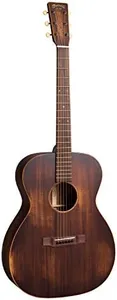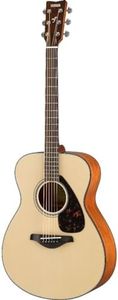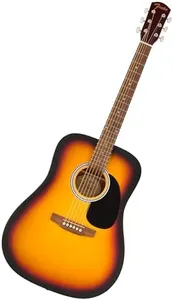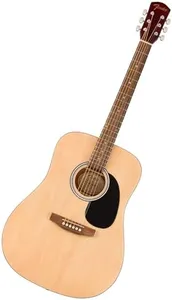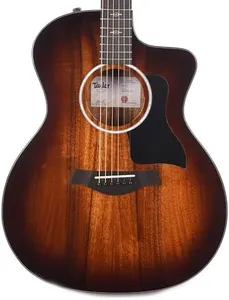10 Best Acoustic Guitars 2025 in the United States
Our technology thoroughly searches through the online shopping world, reviewing hundreds of sites. We then process and analyze this information, updating in real-time to bring you the latest top-rated products. This way, you always get the best and most current options available.

Our Top Picks
Winner
Martin Guitar Standard Series Acoustic Guitars, Hand-Built Martin Guitars with Authentic Wood 000-28 Natural
The Martin Guitar Standard Series Acoustic Guitar 000-28 in Natural finish is a high-quality instrument, ideal for serious players and enthusiasts. The guitar features a 6-string configuration with a spruce top, which is known for delivering a bright and resonant sound. The ebony fingerboard complements the spruce top well, providing smooth playability and durability.
The body of the guitar is crafted from rosewood, known for its rich, warm tones and excellent projection. The combination of rosewood back and sides with mahogany ensures a balanced sound with deep bass and clear highs, making it versatile for various music genres. The neck of the guitar is made from mahogany, providing strength and stability, while the neck profile and scale length are designed for comfortable playability.
The nut width is standard, making finger positioning and chord transitions easier for players of different skill levels. One notable aspect missing from this model is built-in electronics, which means it is purely an acoustic guitar without the capability for direct amplification. This might be a drawback for performers who prefer a built-in pickup or preamp for live performances or recording.
With dimensions of 47 x 20 x 9 inches and a weight of 17.6 pounds, the guitar is relatively easy to handle, though some may find it slightly heavy. This Martin 000-28 model is best suited for dedicated acoustic guitar players who value craftsmanship and rich, authentic tones in their instruments.
Taylor 814ce Builder's Edition Acoustic-electric Guitar - Natural Gloss
The Taylor 814ce Builder's Edition is a high-quality acoustic-electric guitar that suits players looking for a rich, versatile sound and premium craftsmanship. It features a spruce top paired with Indian rosewood back and sides, a classic combination known for bright, clear tones with warm bass response. The mahogany neck and ebony fingerboard offer smooth playability and durability. With a 25.5-inch scale length, it provides balanced string tension that feels comfortable for most players.
The fixed bridge ensures solid tuning stability, and the built-in electronics make it easy to plug in for performances without losing the natural acoustic tone. Weighing in at just over 21 pounds, it’s relatively hefty, which some might find a bit heavy for long playing sessions. It’s designed for right-handed players and uses phosphor bronze strings, which add warmth and brightness.
This guitar is best suited for intermediate to advanced players who want a professional-level instrument with excellent sound quality both unplugged and amplified. Beginners might find it pricey, but its craftsmanship and tone make it a rewarding investment for serious musicians.
Natural Satin Martin D-28 w/case
The Martin D-28 Natural Satin is a classic acoustic guitar well-suited for players who value rich, traditional tone and craftsmanship. It features a solid spruce top paired with East Indian rosewood back and sides, delivering a warm, balanced sound with strong bass and clear highs—ideal for folk, country, and singer-songwriter styles. The ebony fretboard offers a smooth playing surface, complementing the fixed bridge system for reliable tuning and sustain.
The body shape corresponds to Martin’s D-14 size, a well-known dreadnought style favored for its powerful projection and versatile sound. Weighing around 7 pounds with a natural satin finish, it’s a comfortable choice for intermediate to advanced players who want an authentic Martin experience with a straightforward setup. Its high-quality materials and iconic tone make it a solid pick for serious acoustic guitar enthusiasts.
